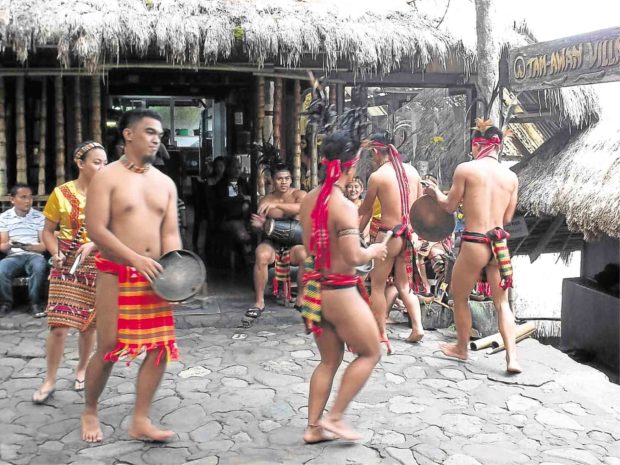
What is the value of protest art in Philippine society? This question was posed before panelists at the recent Tam-awan International Arts Festival in Baguio City.
Several speakers, including a representative of the Ayala Museum, took up the challenge. Their collective replies could be summed up thus: “Now, many (artists) are protesting, like martial law. They show the situation of their society; it (protest art) is not boring, it’s visual in language. There are those who buy these works. There’s effigy burning, the media take it up and it’s shown nationwide. They are documenting their times; we should show the other side.”
Managed by the Channung Foundation, which is headed by Cordillera solar artist Jordan Mang-osan, the festival was supported by the National Commission for Culture the Arts (NCCA) , chaired by National Artist Virgilio S. Almario, and other allied agencies.
The venue was Tam-awan Village, a haven for Cordillera art and culture, with its accommodations in the form of authentic Ifugao huts, galleries, a gathering place with paved stones, performances, opportunities for interaction with village artists, arts and crafts, and a bracing mountainside setting alive with indigenous flora and fauna.
This year there were workshops on basic sketching, watercolor and acrylic painting, terra cotta, basic photography, solar drawing and wood carving. Visitors had themselves or their children sketched, or tattooed (the adults, I mean) .
The festival gave equal importance to indigenous cuisine and delicacies, with lecturers showing the influences as well as the unique qualities of Filipino cooking. Jovita Ganongan, regional director of the Department of Tourism, said “we promote food products and help the farmers market these products, explores markets abroad and help them deal with climate change.”

She added, “cuisine is a showcase of culture, along with the arts and crafts that will make us competitive.”
Cultural performances were another feature of the festival. From the colleges and universities came fair Igorot maidens and hunks in their colorful costumes, beating their gongs, the women graceful in their movements and the males manly, martial arts-savvy. During a break in the dancing, I asked a young Igorot, a student at Benguet State University: “Are you imitating the movement of birds?”
“Every movement has meaning,” he intoned.
The Manila yokels, some with their children along, were of course captivated by the comely and personable dancers. And there was an endless stream of photo opportunities. And the Tam-awan festival took a step forward in promoting Cordillera art and, through Channung Foundation, in helping the farmers improve their livelihood. —CONTRIBUTED














































